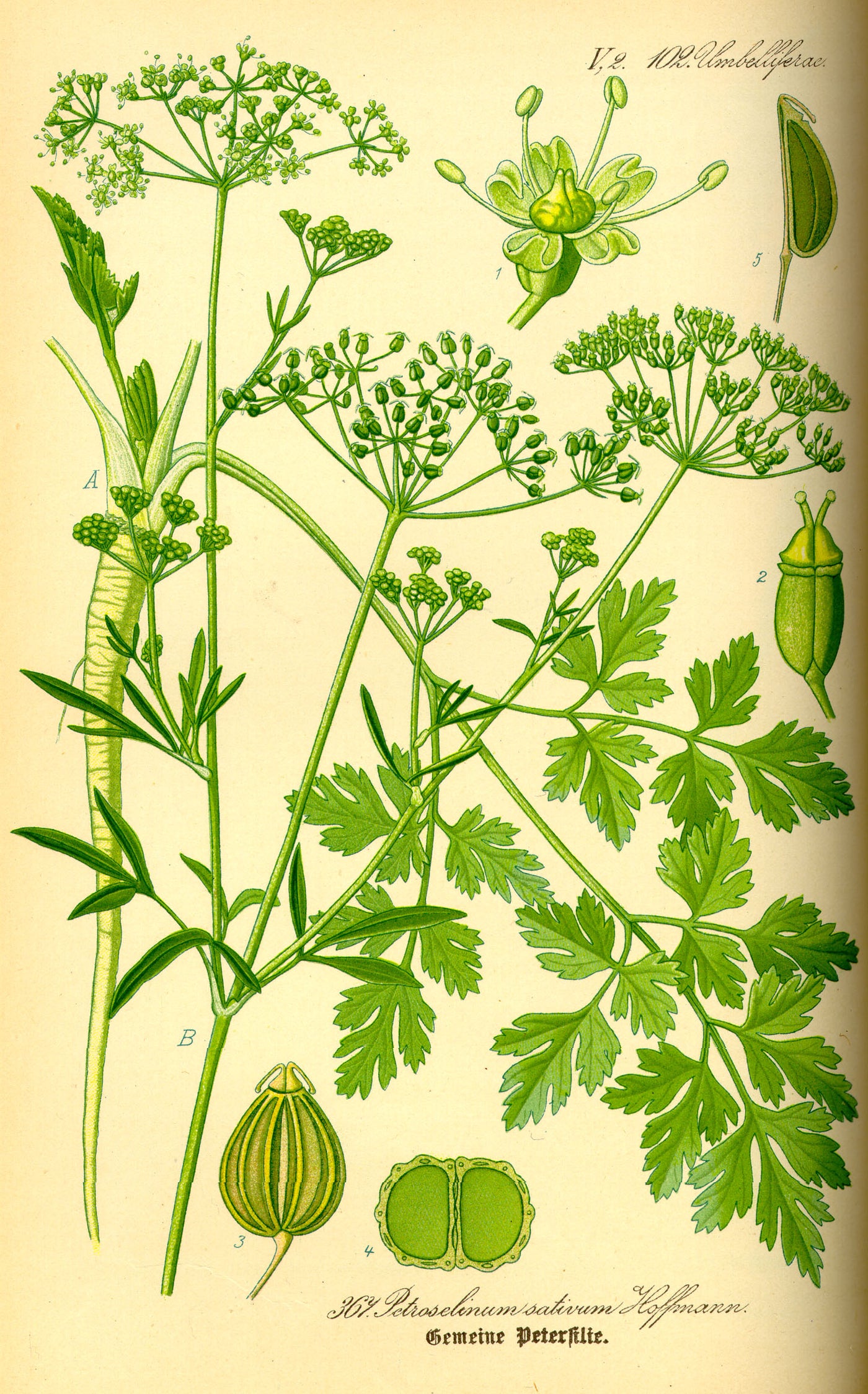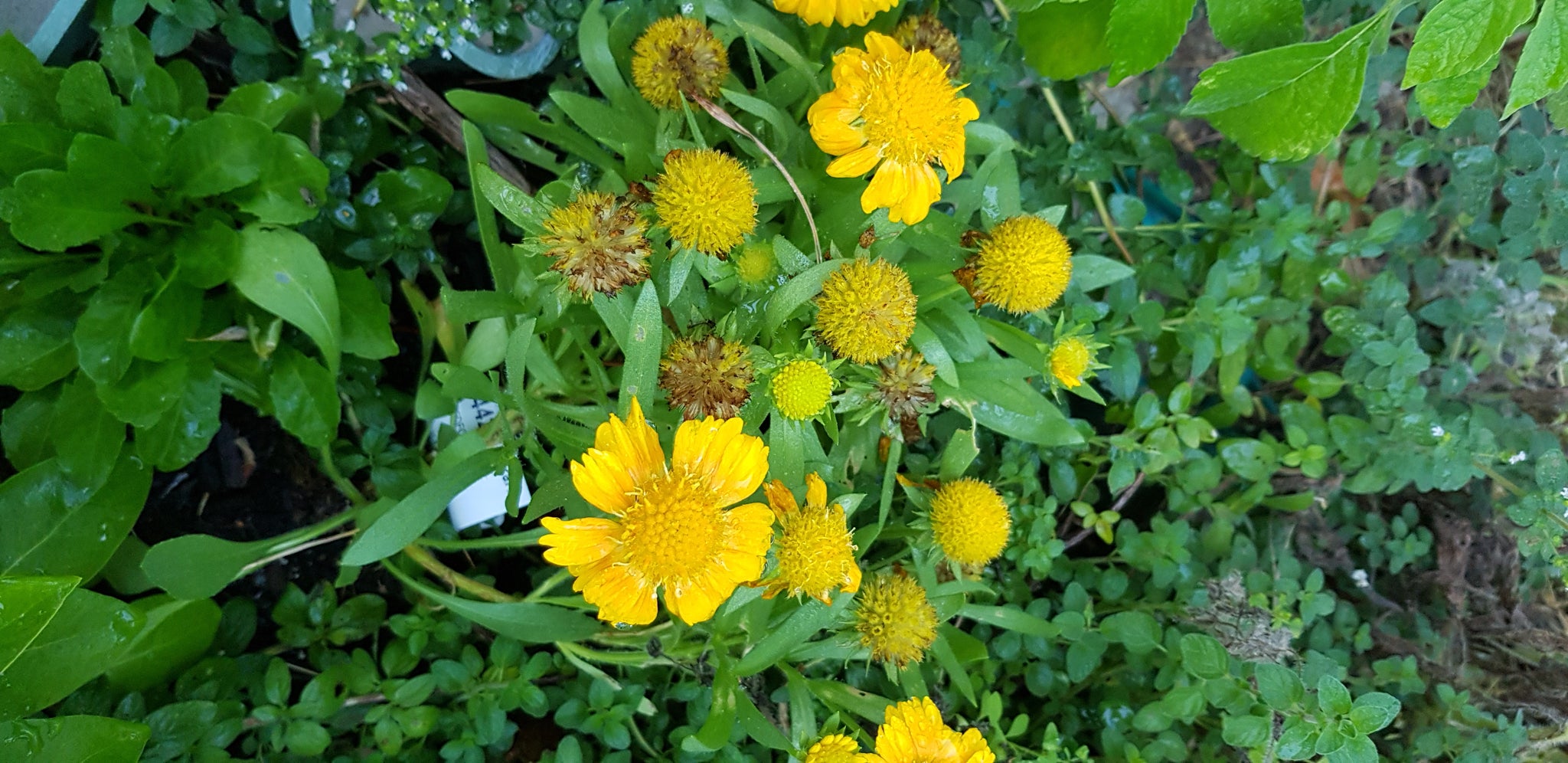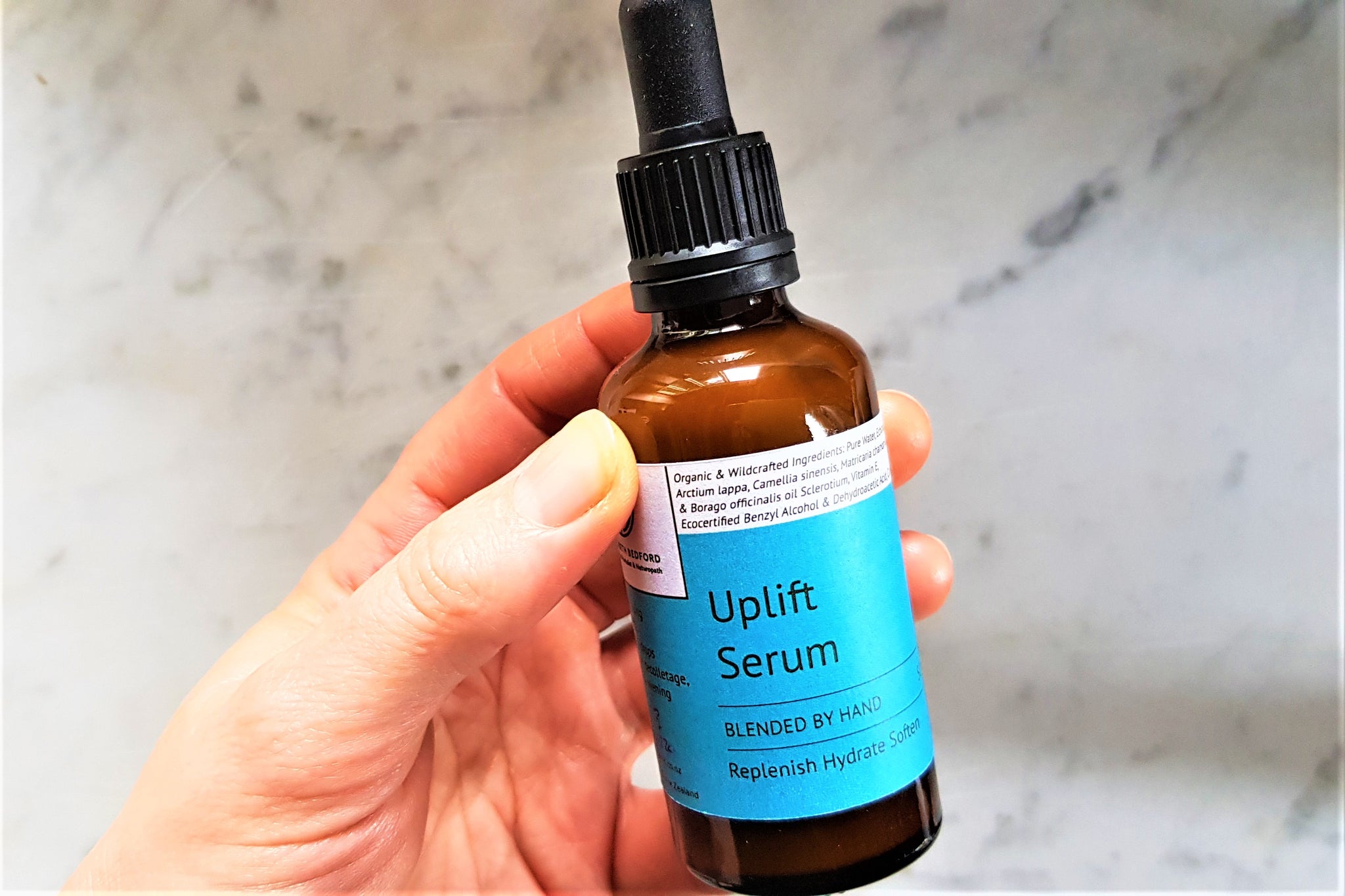
Parsley. (Petroselinum crispus). A basic herb that most of us patronisingly group as a culinary herb, good on scrambled eggs, but not much else. Well…actually…
Parsley has been used for thousands of years for kidney stones and bladder issues, as well as being a uterine tonic and digestive aid.
Parsleyhas been found in tablets discovered in a ship that sank in BCE 142….it’s been used as medicine for millenia, literally.
Digestive issues such as bloating and cramps? Think of adding it to your diet. Also, if you’re prone to cystitis, water retention, painful periods or gout…or - and this is key-want to avoid such issues.
How? Add a handful to any soup or stew. Toss a handful over roast veges. Make a cup of parsley tea (yes, it’s a thing, see below). Add a handful to a salad, omelette or frittata.
Not only are you getting the benefits of parsley itself, you’ve just added another plant to your intake!
Parsley works very well in winter meals, because it's full of aromatic oils which wake the digestion up. The Germans use it extensively to improve digestion of the thick stodginess of classic meatball and dumpling dishes.
Its constituents include some powerful phytochemicals: volatile oils and flavonoids, as well as vitamin A & C, iron, manganese, calcium, phosphorus, fixed oils, and proteins.
However! Those anaemic plants from the supermarket, living off the ghost of a synthetic nutrient mix, are not likely to contain much in the way of health. They can’t make nutrients for you from thin air.
Get some plants…plant them in real soil, with some compost. Let them grow, picking and eating leaves in a minimal, civilized way. When they flower, admire the jewel-like stars of flowerheads, then through autumn, allow them to dry and messily self-seed. (Fine, if you must tidy them up, help them along into a pot, or layer them into the garden somewhere). When the winter rains come, so too will the new parsley. Now, you can pick huge rustic handfuls and cast them into your daily diet. Ease off once summer arrives. Next autumn, some will flower, some will keep growing, some you might harvest for roots. The cycle continues…
Extra benefits
Parsley removes odours…a fact used by generations of teenagers chewing parsley as they came home via the back door in the early hours to remove incriminating odours from their breath!
It’s also said to address footrot in sheep, in large quantities, and of course, as a member of the Apiaceae family, it’s a wonderful plant for pollinators, so it makes an excellent addition to a pasture or orchard ley.
Equally, grow it for poultry, to add to the nutritive content of their eggs.
Parts used
For you, in everyday herbal use, I suggest the leaves, or roots, in food and teas only.
The seeds are highest in volatile oils, and that’s where it starts getting serious.Please consult a medical herbalist if you want to use the seeds.
If harvesting the roots, this should be done in autumn of the first year. (Parsley is technically a biennial, meaning it lives for 2 years, flowering in the second year and then dying).
Traditional dangers?
If we start from the beginning of our knowledge, the Romans knew parsley could cause miscarriage, and this knowledge travelled with it through the next millennium and beyond. “Country folk believe it causes miscarriage” according to Michael Howard.
In the 20th century, modern science started warning about the danger of parsley seed, with it’s volatile oils. Yes, thank you, modern science, you can put your hand down. We know.
While a garnish of leaves is no problem, do not use parsley otherwise in pregnancy.
Uses
As an antispasmodic and diuretic, parsley was used to cleanse the kidneys and improve appetite, and it did this by providing minerals and vitamins to act as co-factors in a number of processes, as well as acting to flush and relax the area. Cleanse in this context doesn’t mean flushing everything out, but in an older sense: to revitalise.
The approach: Infuse 1 T dried herb (or 2 T fresh) for 20 mins, take 1 x daily.
Some people suggest a cold infusion; while a warm one is fine, COVER THE TOP – volatile oils are lightweight particles which will fly off in the steam.
It was considered a key kidney herb in Europe throughout the Middle Ages.
Culpeper, in 1652, recorded Parsley as being under the dominion of Mercury, and that " it is very comfortable to the stomach and helps to provoke urine and women’s courses..The root is one of the 5 opening herbs…the seed is best to break the (kidney) stone"
In the 20st century, the German Commission E noted that it was considered useful in flushing out the urinary tract, and in prevention and treatment of kidney gravel.
They also warned that large amounts of fluid are needed!
Who's right?
Interestingly, different sources conflict when we look at lactation. Julian Barker, a British Herbalist, says that it dries up the milk for lactating mothers, while Richard Mabey says that it increases milk production. Realistically, the leaves aren’t going to be a problem either way, and you wouldn’t be using the seeds without talking to your herbalist, but its interesting to see the variation that can occur.
The next aspect is antioxidants, because it contains flavonoids, which are constituents that are antioxidant. Really important: flavonoids are water soluble. So a cup of tea, or a parsley flavoured broth (e.g. toss it into soups!) work well.
Extreme claims?
A 2015 study got very excited, and concluded “Regular addition of P. crispum in the daily diet as food or supplements can help strengthen the antioxidant systems of the body and reduce the effects of free radical‐induced carcinogenesis, cancer and subsequent metastasis caused by prolonged and excessive oxidative stress”
I found this exciting myself, because it used leaves, rather than the traditional seeds or root, and although the study itself got a little carried away, and extracted the flavonoids in about seven different solvents, includinghexane, dichloromethane and ethyl acetate, the end conclusion was that dietary consumption could produce benefits.
Long story short, parsley is hugely overlooked as part of your general base for health. By using the leaves on a regular basis, gentle tonic effects on the kidneys, bladder and uterus can help with overall metabolism and detoxification.
If you have serious issues with these organs- please, consult a medical herbalist, don't try to do things on your own.
Refences include;
American Botanical Council. (2011).Plant DNA Found in Medicines from Ancient Roman Shipwreck. HerbalEGram: Volume 8, Number 1
Barker, J. (2001).The Medicinal Flora of Britain and Northwestern Europe. Winter Press, Kent, UK.
Blumenthal, M. ed. (1998). The Complete German Commission E Monographs. American Botanical Council, Austin, USA
Felter, H. (1922).The Eclectic Materia Medica. Scudder, Cincinnati, USA
Hoffman, D. (2003).Medical herbalism: The science and practice of herbal medicine. Healing Arts Press, Rochester, USA.
Howard, M. (1987).Traditional Folk Remedies; a Comprehensive Herbal. Century, London UK.
Mabey, R. (1988).The Complete New Herbal. Penguin, London.
Weiss, R. (1960).Lehrbuch der Phytotherapie.Hippokrates Verlag, Stuttgart, Germany.
Williamson, E. (2003).Potter’s Herbal Cyclopaedia. C W Daniel Co., Essex, UK
Tang, E. L., Rajarajeswaran, J., Fung, S., & Kanthimathi, M. S. (2015). Petroselinum crispum has antioxidant properties, protects against DNA damage and inhibits proliferation and migration of cancer cells. Journal of the science of food and agriculture, 95(13), 2763–2771. doi:10.1002/jsfa.7078

